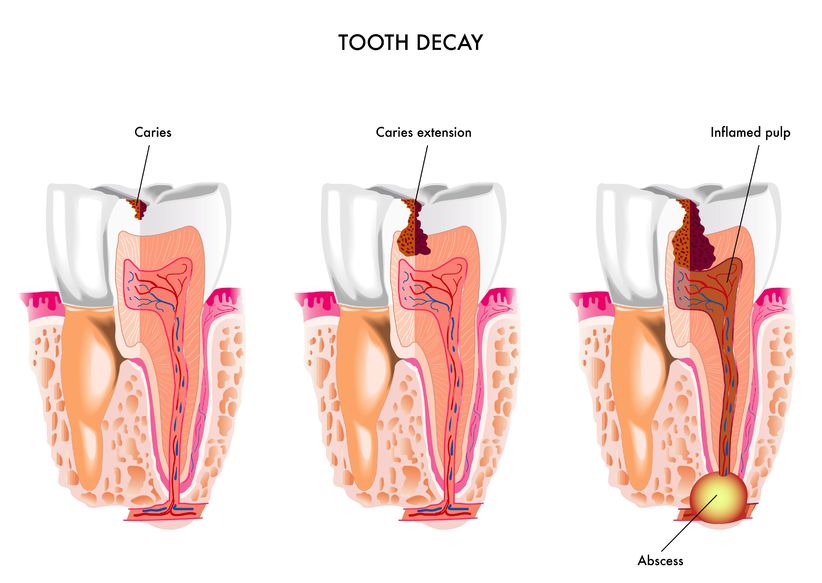Tooth decay is a damage that occurs when bacteria in the mouth generate acids in the mouth that eat away at a tooth. This can then lead to a hole in the tooth, which is commonly known as a cavity. If a cavity is not treated, tooth decay can cause pain, infection in the tooth and gums, and even cause the loss of a tooth. If a tooth decay infection spreads, it can lead to a more serious infection in the brain, heart, or sinuses which can become life threatening.
There are 3 layers of the tooth: enamel (the outer layer), dentin (the middle layer), and pulp (the center of the tooth). The pulp consists of nerves and blood vessels. The more layers affected by the tooth decay, the worse the pain and damage is.
How common is tooth decay?
Tooth decay and cavities are among the most common of human diseases.
What causes tooth decay?
The main cause of tooth decay is the loss of minerals from the tooth enamel due to the action of acids produced by dental plaque. Cavities are most likely to develop in the pits of the chewing surfaces of the back teeth, in between teeth, near the gum line or at the unprotected root.

What happens if tooth decay is not treated properly?
If left untreated, tooth decay can destroy the tooth. It is also a source of infection that will spread by the blood that circulates from the mouth to the rest of the body.
How does the dentist remove tooth decay?
The dentist that comes to your facility will bring the equipment and supplies, including the portable drill necessary to remove the decay.
What can be done to prevent future tooth decay?
Brush your teeth and gums twice per day, especially after meals; rinse your mouth after drinking; eat balanced meals avoiding those high in sugar; and visit the dentist regularly for cleanings and check-ups.
SOURCES: http://www.nidcr.nih.gov/oralhealth/OralHealthInformation; http://www.webmd.com/oral-health; http://affordental.com/how-to-stop-tooth-decay-dental-caries
